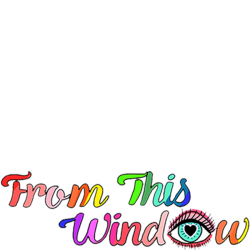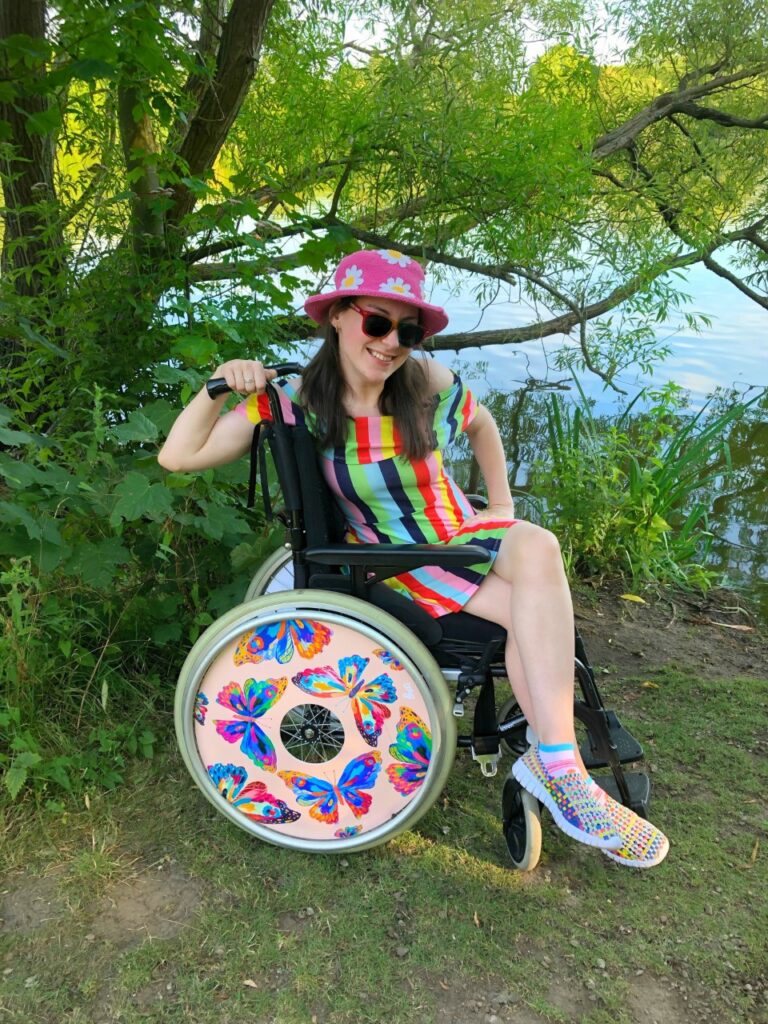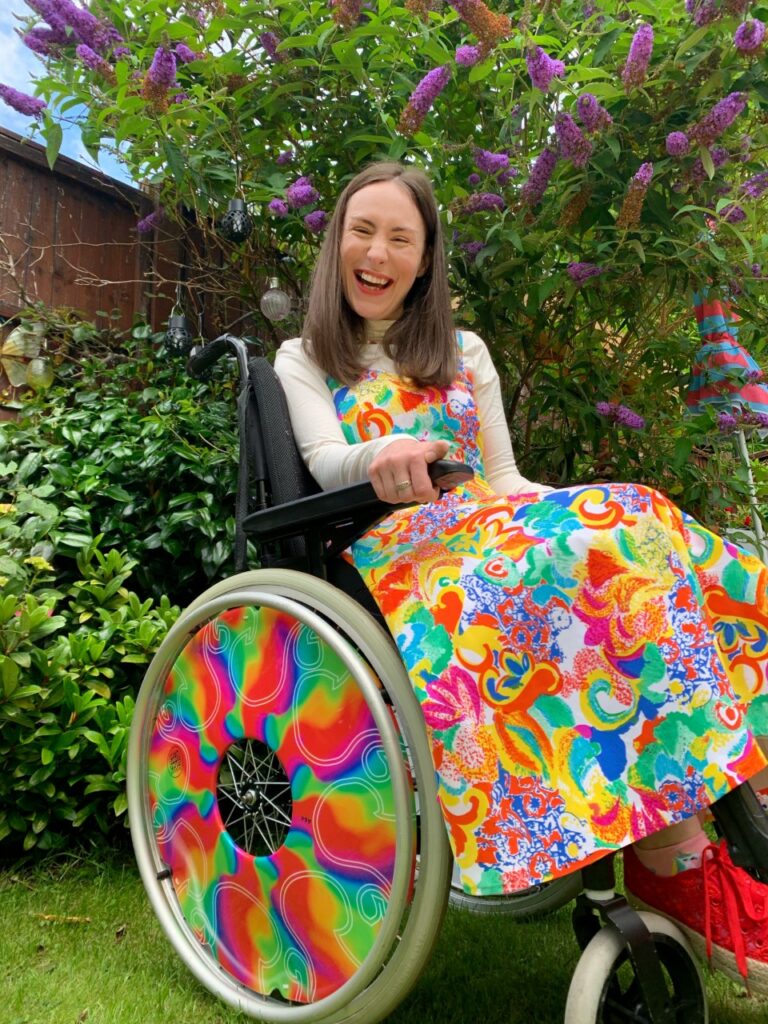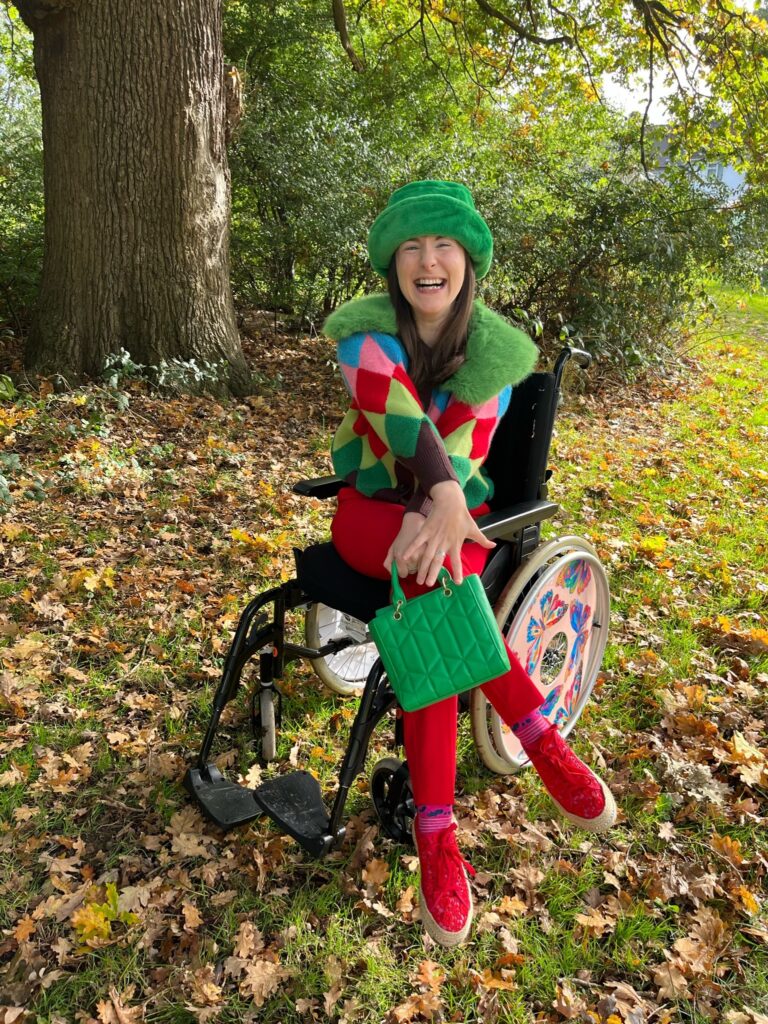
Dear Reader,
At times life can feel a bit more challenging. Sometimes we know exactly why, and at other times it can be hard to pin point what is causing us to feel this fogginess and it feels excruciating when trying to lift this weight. No matter how we find ourselves at a low ebb, our self-chatter can massively contribute to how we feel. Like a lot of people, when finding myself in tricky waters, I can be the biggest mean girl to myself and this can just intensify my thoughts and feels like I’m standing on quick sand- it is all too ready to swallow me up!
I think a lot of disabled peers will say that internalised ableism can add a bloody great big layer to some of the not so glittery thoughts that we may experience from time to time. There seems to be a real under expectation of disabled people and therefore sometimes feel like we have to work harder to be seen and heard. This is witnessed time and time again in work environments, in education systems, in the travel industry, in relationships and what this looks like, in the media’s representation of disability… it’s endless -all whereby we, as disabled people, are prescribed to the type of role we play by society. However this narrative manifests, it can enable some of us to believe that we are not worthy or good enough or shouldn’t be where we are. I’ve done this countless of times, listening to self-doubt and the cunning charm of internalised ableism way too much, thinking that I should back out of something. It’s exhausting! But rather than realising that we are experiencing internalised ableism, these thoughts can latch themselves on to us and become part of the beliefs that we hold about ourselves.
It’s important to recognise the flavour of our thoughts, where they might have come from and how we can change this up, not letting them consume us.
I’ve listed below, some of the disabled limiting beliefs that I can experience and how I try to break through them. If you find yourself identifying with any of the following limiting beliefs, I hope that you find the tips/reminders that I pair them with helpful.
- A limiting belief that I have sometimes is in regards to voicing my rights. Enquiring about wheelchair access or saying what I need can feel daunting sometimes. I never know how requests will be received, sometimes with a more than helpful attitude and others with a huff and a puff, when, say, putting down a portable ramp, or even hearing an out and out ‘no.’ The latter two responses can make me feel as if I shouldn’t say anything or shouldn’t be there. But over the last few years I’ve realised just how much my needs and wants are valid and more than that, I deserve the right to be there just as much as the next person. This is a reminder I repeat to myself when get that voice in my head is trying its best to get me swallowing my words. Disabled rights are human rights. I’ll admit, it’s a difficult thing to do but when you start just saying how things are, the less scary it can become- do not ever put your rights second!
- My speech impediment is something that I can be really conscious off and get a little anxious over whether people will understand me. Last year, I got tired of confining myself I wanted to give myself a bit more freedom. One day I started just to speak into the camera. I normally just post text along with photos online to express my thoughts, never sharing my actual voice, so this was heart pounding stuff. Although very apprehensive at first when I started, I began to settle into it. It showed how I, and I’m sure that I am not alone in this, can magnify things in my mind and they can feel a bit more difficult than they actually are. When I posted this video online, people were absolutely lovely in response. Note to self- don’t spend too much time brewing over something and don’t give into your own doubt! I really want to do a bit more of this in the year ahead.
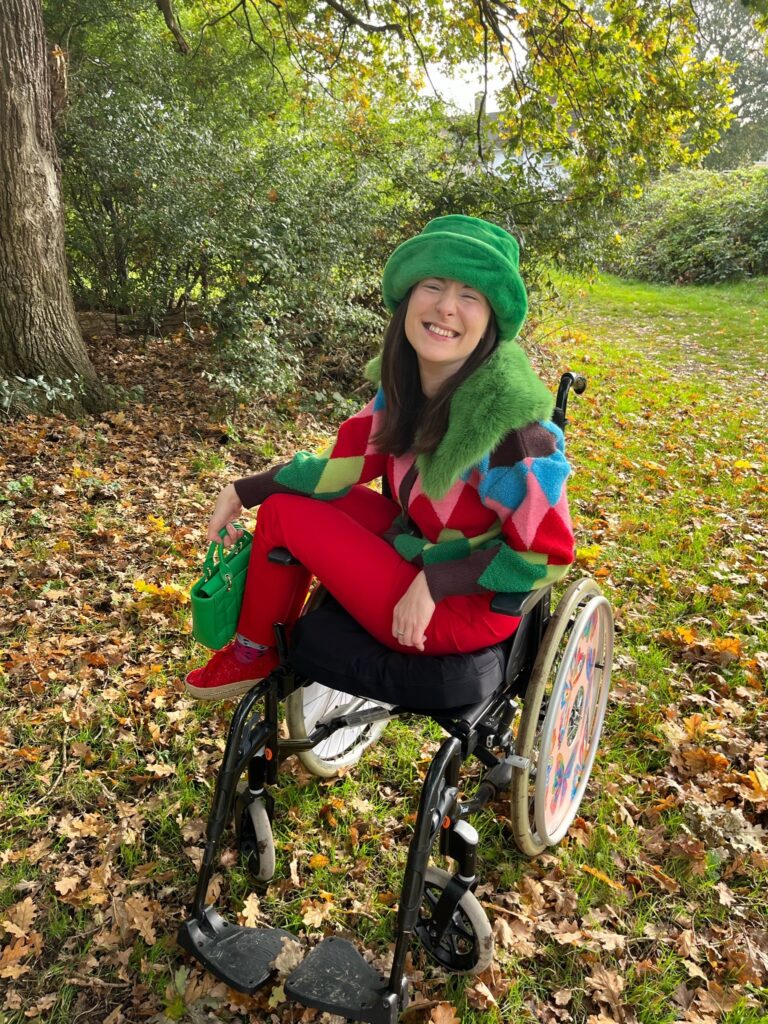
- Another limiting belief that I have is around time. A subject that I always get caught up on. My Cerebral Palsy means that it can take me a bit more time to do certain things. Sometimes this can really bother me, especially if in my head I am a step or two ahead. In them moments I believe that I should move faster. The more I try to do this though, the less my body becomes uncoordinated and so tasks take even longer to complete. The thing is everyone is running on their own clock and really…isn’t it about deserving yourself the time you need rather than folding yourself in two to meet an unrealistic time frame? It’s time (sorry!) to start setting realistic deadlines so you won’t burn out and that you can fully focus on the task in hand without forever clock watching.
- I think this one is applicable to all humans really and surrounds the feeling of being enough. Coming from a disabled person’s perspective, a layer of this could be due to the structure of society and how the word, disabled, is branded. Looping back to the start of this blog post and the little expectations that non-disabled people can have of disabled people, it can make disabled people doubt themselves or believe that they need to prove who they are in order to be seen as enough. It was only through my twenties really that I realised that I didn’t need to do this. Discovering the social model of disability, which says that people are disabled by societial barriers, was a game-changer for me. I learnt that my disability wasn’t at fault. It was the world around me. I didn’t need to change. I didn’t need to prove who I was. It’s really easy cheesy to say try and not be moved/powered over by stigma but really just being yourself is all you can be. You are enough as you are.
I hope that by sharing some of my limiting beliefs and I how am trying to break them down a little and not letting them have as much power, perhaps it’s given you food for thought as to how to tackle your own limiting beliefs. And remember there just beliefs, not the truths
All my love XX

